Almost everyone use some sort of cloud storage nowadays. But what if you want to, you know, own your own cloud storage, but don’t quite know how to setup and run one yourself, what can you do? There are certainly a number of solutions, like this Aztech PSD500 personal storage dongle, that retails for quite a low price.
The Aztech PSD500 is quite a simple device. There’s an Ethernet port on one end of the dongle, for connecting to your wired network, and a USB port on the other end, for connecting a USB flash drive or USB hard disk drive. Give it power through its Micro-USB port, and you instantly have your own personal cloud storage service, with data served out of its connected storage device.
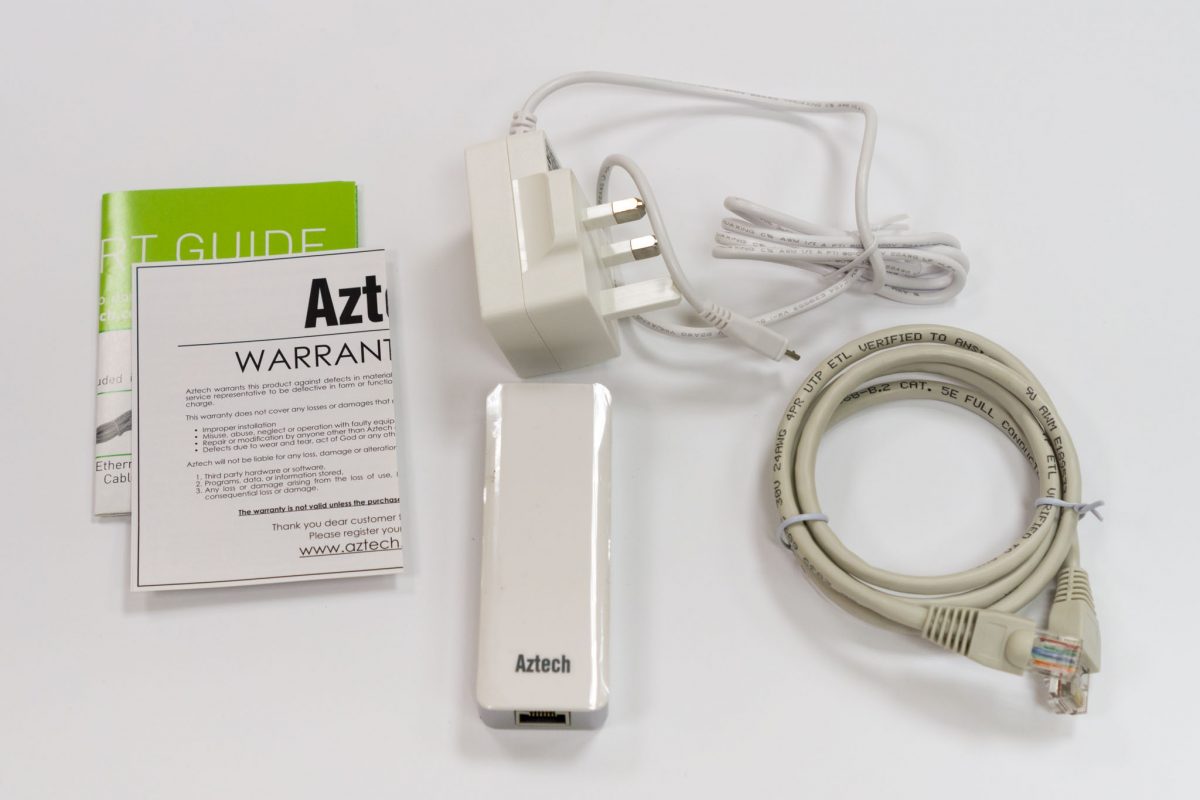
The PSD500 comes with Ethernet cable and Micro-USB power supply to get you started right-away. You would have to plug in your own storage device.
The dongle itself is pretty small. A RJ45 Ethernet LAN port is at one end. Connect the supplied Ethernet cable here, and the other end of the cable to your existing wired network, such as the LAN port of your broadband router. I noted that the RJ45 port on the PSD500 had a bit of “fit” problem, as the Ethernet cable would not “click” in securely, and I verified with another Ethernet cable to confirm the problem wasn’t with the cable. Perhaps this could be just a fluke manufacturing issue with my particular dongle.
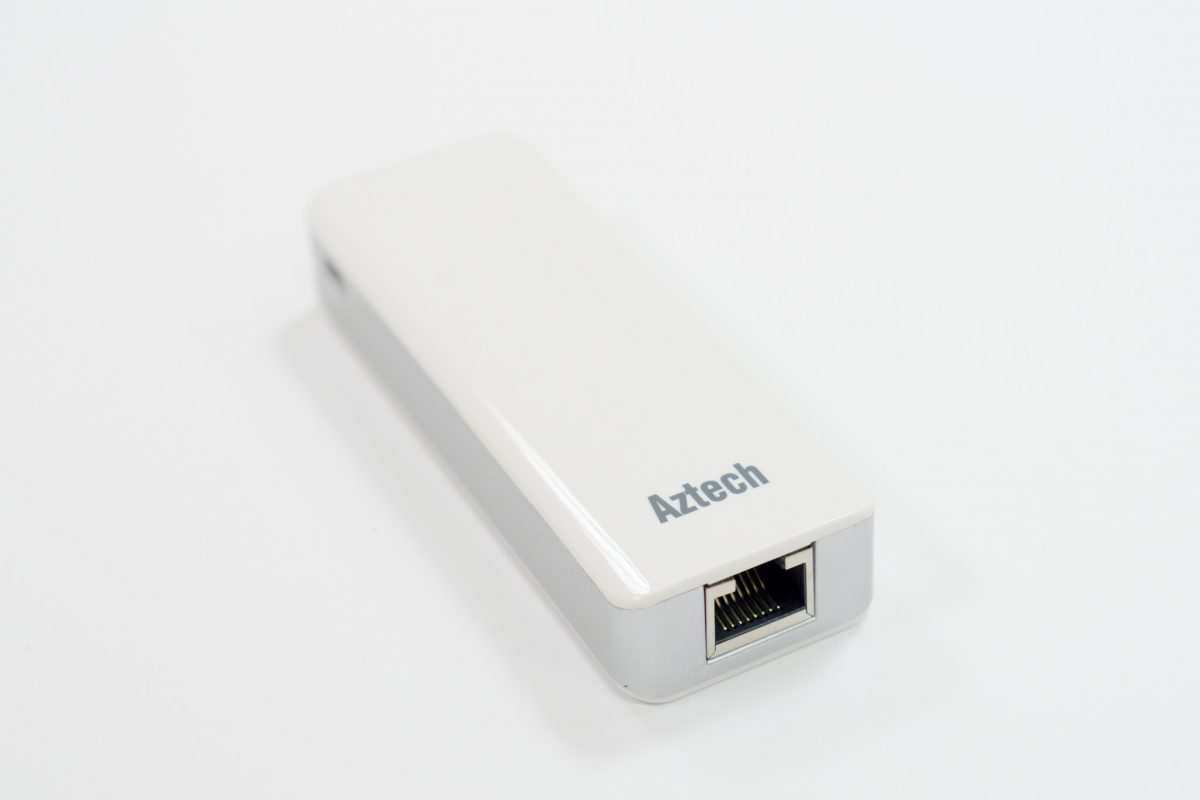
The USB port is on the other end, for connected USB storage devices up to 2 TB capacity. It’s regular USB 2.0. That’s probably not much a real issue because the bottleneck is likely to be the network bandwidth. If you’re accessing the PSD500 from the Internet, your Internet speed is probably not going to be fast enough.
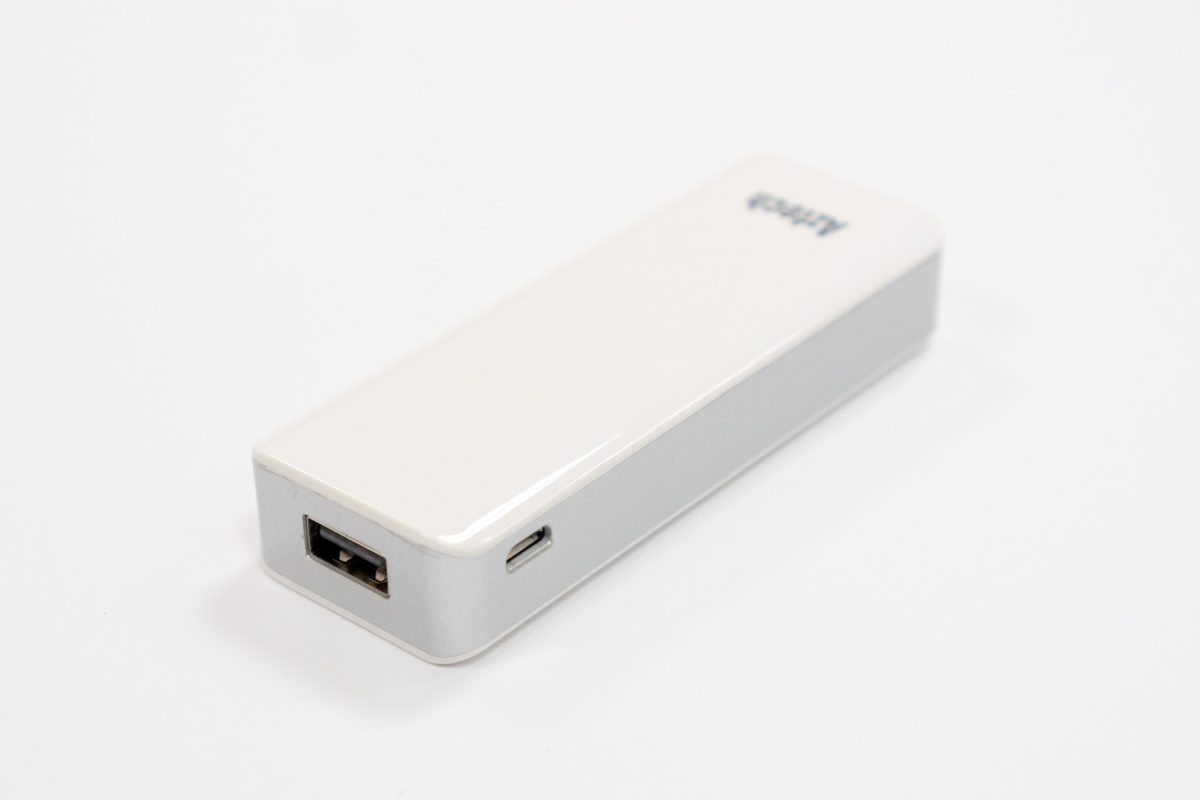
The Micro-USB port on the side is for power input. It’s good that Aztech chose to go with Micro-USB, since you can then use any other USB power supply for the PSD500.
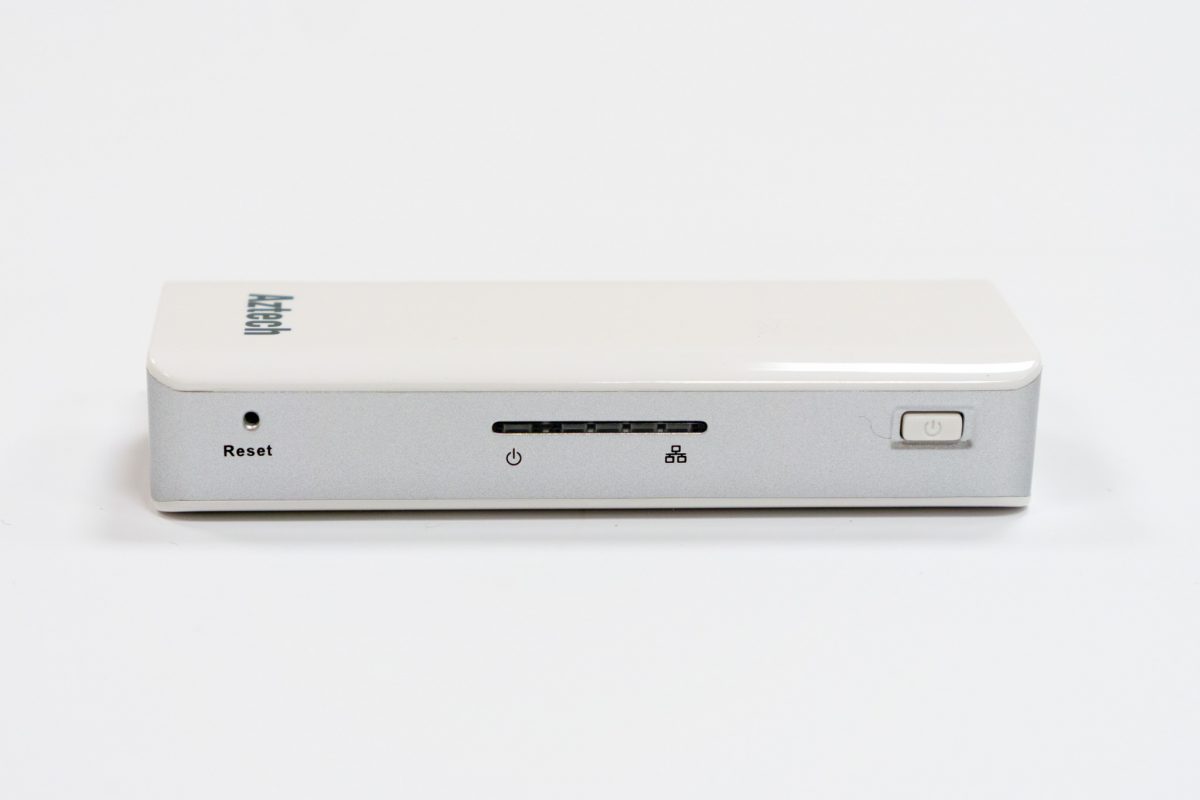
There’s a power button and a reset button on the side. A LED indicator between them provides power status and Ethernet status. There is no indicator for the USB port though.
The PSD500 is designed to work with a smartphone or tablet. The Aztech Storage app, available for both Android and iOS, is used to setup the device and provide you with the cloud storage access. Sadly, there is no app or even web interface for use from a desktop or notebook computer.
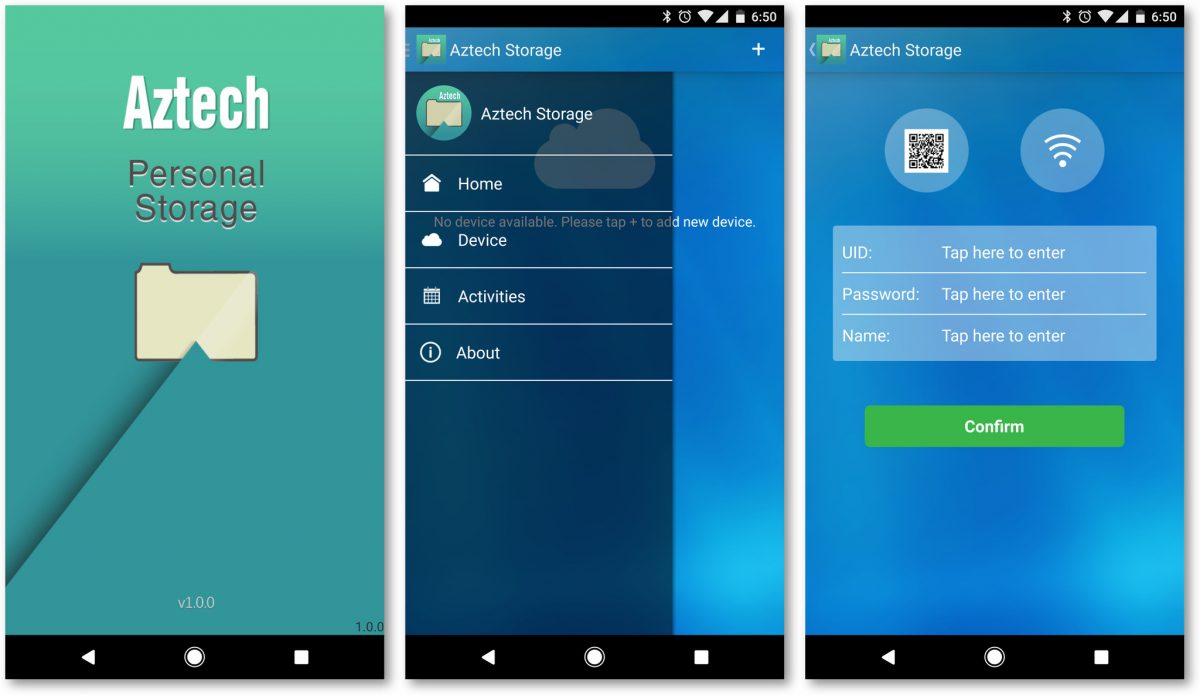
Setup is straight-forward. The LAN scan function didn’t work for me, but I could add the device by scanning the QR-code on the printed label. The default password “admin” still had to be entered manually though.
Once the setup is done, the storage device attached to the PSD500 can be seen in the app.
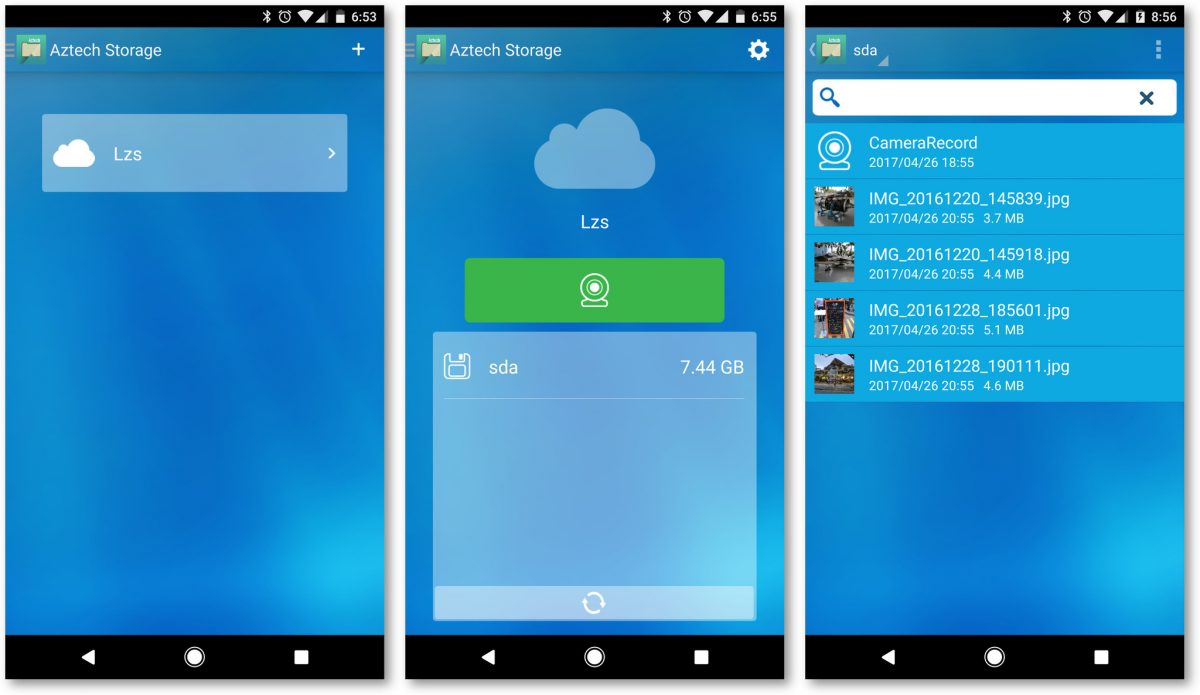
You can upload and download files, do basic file operations like rename and move, but there’s few other functionality. You can’t sync files, for example.
One of the main features of the PSD500 is to support recording from selected Aztech IP cameras. You can configure supported cameras in the PSD500, and have recordings saved on the storage attached to the PSD500. Supported Aztech IP cameras include:
- WIPC408HD
- WIPC409HD
- WIPC410 Enhanced HD
- WIPC411FHD
You can add up to two cameras to the PSD500.
The Aztech PSD500 features are limited, but if you have any of the supported Aztech IP cameras, this personal storage dongle provides the ease and convenience to save your video recordings in your own cloud storage.
The Aztech PSD500 retails for S$99.
Conclusion
The Aztech PSD500 lets you easily build your own personal cloud storage. It works well with a supported Aztech IP camera.
Pros:
- Small, simple to setup and use
- Connect your own storage device
Cons:
- Cloud storage access limited to Android and iOS devices
View Comment Policy